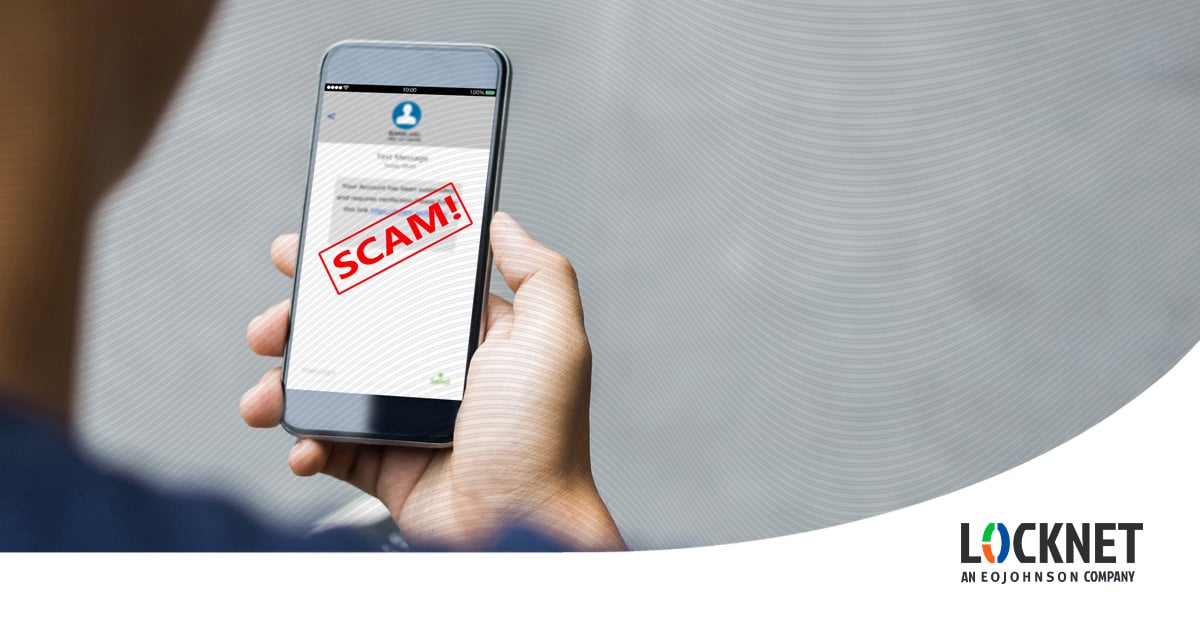Industries We Serve
World Class IT Support & Service
Real People. Right Now.
About Locknet® IT Services
From the first hello, the Locknet® team is dedicated to serving you and your needs.
Real People. Right Now.
From the first hello, the Locknet® team is dedicated to serving you and your needs.


Updated February 26, 2024
In the ever-evolving landscape of cyber threats, criminals are constantly finding new and inventive ways to exploit vulnerabilities. Two such methods, vishing and smishing, have emerged as potent weapons in their arsenal. In this blog, we'll delve into what vishing and smishing entail, provide real-life examples of common scams, and equip you with practical strategies to shield yourself from falling victim to these deceptive practices.
Vishing, short for voice phishing, is a social engineering technique where fraudsters use phone calls or voicemail messages to impersonate legitimate organizations, such as banks, government agencies, or companies. They aim to manipulate individuals into divulging sensitive information like passwords, credit card numbers, or social security numbers.
Smishing, short for SMS phishing, involves sending deceptive phishing text messages to mobile users. These text message scams often contain links or prompts that, once interacted with, can lead to malicious websites or trick users into revealing personal information.
While both vishing and smishing are phishing attacks aimed at stealing sensitive information, they differ in their mode of operation. The primary difference between smishing and vishing lies in the communication channel used.
Vishing scams occur over phone calls. Attackers use voice manipulation software and caller ID spoofing to make their calls seem legitimate. They rely heavily on social engineering techniques to manipulate victims into sharing confidential information verbally.
On the other hand, smishing scams happen via text messages. These messages often contain malicious links leading to phishing websites or prompt recipients to reply with personal information.
Be on the lookout for these common voice phishing and SMS phishing scams.
In a typical vishing scenario, a fraudster might impersonate a bank representative, urgently claiming that there is suspicious activity on the victim's account. They'll then request sensitive information, such as passwords or social security numbers, under the guise of resolving the issue.
Someone receives a call with an offer to assist with a technical issue on their computer they weren’t aware of. Victims are often asked to install software or give the fraudster remote access to their computer.
In smishing scams, victims may receive a text message claiming they've won a contest or prize, but to claim it, they need to provide personal information or pay a fee. This preys on the desire for sudden windfalls, tricking recipients into revealing sensitive details.
The scammer sends a text with a link to track a package from somewhere the victim often shops. The link may ask for login credentials or install malicious software on the device.
Scammers posing as government agencies might call or text individuals, claiming they owe back taxes or have outstanding legal issues. They'll threaten severe consequences if immediate payment or personal information isn't provided.
Here are some tips to help protect yourself from vishing and smishing scams.
Ensure you have reputable security software on your devices, and keep it updated to protect against malware and phishing attempts. Don’t delay updates to your phone.
Never give out personally identifiable information such as account numbers, social security numbers, and passwords to people you don’t know.
Stay informed about common scams and share this knowledge with friends, family, and colleagues. Awareness is a powerful defense against social engineering attacks.
Vishing and smishing are increasingly sophisticated techniques employed by cybercriminals to exploit unsuspecting individuals. By understanding the nature of these scams and implementing proactive protective measures, you can reduce your chances of falling prey to these deceptive practices. Remember, vigilance is the strongest shield against social engineering attacks, and staying informed is your first line of defense.
A thorough security assessment of your organization can uncover vulnerabilities that may be putting you at risk. Unfortunately, those may include your employees if they aren’t up to date on the latest cyber scams. As part of our managed IT services, the team at Locknet can provide a comprehensive security assessment and provide an employee cybersecurity education strategy if it’s needed. After all, your cybersecurity defenses are only as strong as your weakest link.
Cybersecurity

Onalaska, WI Waterloo, IA Wausau, WI Eau Claire, WI Burnsville, MN
You are now leaving locknetmanagedit.com. Please check the privacy policy of the site you are visiting.